Week Beginning 8.6.20 Reception Home Learning Overview
This week’s theme is ‘Spiders’

Choose one or two things from each area to do over the week.
Some of our activities will be based on two stories this week- The Very Busy Spider by Eric Carle and “Aaaarrgghh, Spider!” by Lydia Monks. If you don’t have a copy of the story, don’t worry, you can watch them here:
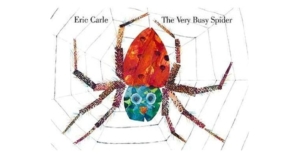
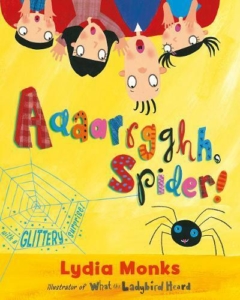
https://www.youtube.com/watch?v=5df388jmToo
Personal, Social and Emotional Development (PSED)
- Continue to focus on turn-taking games as a family- board games, sports etc
- Although we are often frightened of minibeasts such as spiders, wasps and bees, we are giants compared to them. Talk to your child about the need to take care of minibeasts. Create a multi-storey hotel that’s full of all sorts of natural materials, providing hidey-holes for creatures galore. Safe hideaways can be hard for wildlife to find in some gardens, and what better use for all your garden waste and odds and ends? Build your bug hotel (also known as a wildlife hotel or stack) well and it could shelter anything from hedgehogs to toads, solitary bees to bumblebees, and ladybirds to spiders. Look at the RSPB website for ideas on how to build one. https://www.rspb.org.uk/get-involved/activities/give-nature-a-home-in-your-garden/garden-activities/build-a-bug-hotel/
- In the story “Aaaarrgghh, Spider!” the little spider is very keen to show off his talents. What special talents do you have? Ask an adult to video you showing what you can do and upload it to Tapestry to show Mrs Theo and Mrs Gymer.
Communication and Language
- Talk sensitively about things which scare people but which, when explained are not frightening such as spiders and shadows.
- Read/ watch The Very Busy Spider and ask some of the following questions to check for understanding.
- What did the horse invite the spider to do?
- Why didn’t the spider answer?
- The cow wanted to share her grass, but the spider ignored her – why?
- What happened when the sheep wanted to run with the spider?
- The spider did not answer when the animals spoke to her – was she being rude?
- The goat tried to get the spider’s attention – what did he say?
- What did the pig want the spider to do?
- Why didn’t the spider chase cats with the dog?
- When it was naptime, who took a nap? What did the spider do?
- Who wanted to go for a swim with the spider?
- Who caught the fly?
- The owl wanted to know who made the web, but got no answer. Why not?
Physical Development
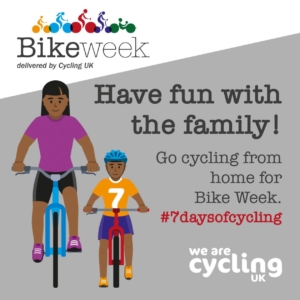
Whole School Pope Paul Biking Challenge
We want you to get on your bike and take part in a Pope Paul challenge! This week, try and get out and cycle as much as possible to help us reach our goal of completing a virtual cycle from John O’Groats to Lands End. At the end of the week, send Mrs Theo the total number of miles you cycled and we will add them together with the rest of the school. Our target is to complete the full 874 mile journey as a whole school.
https://www.cyclinguk.org/bikeweek/about
- Sing the nursery rhyme ‘Little Miss Muffet’. Recite the rhyme several times and then change the ‘sat down beside her’ to include a variety of movements such as ‘jumped down’, ‘tiptoed’ or ‘skipped’. Encourage your child to move in time with the words.
- Draw/ create a large web outside and move and balance on the web lines in a variety of different ways.
- Use wool to make a web by weaving in and out of furniture or natural structures such as trees outside.
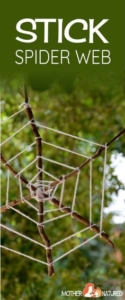
Understanding the World
- Watch the following videos for some fascinating facts about spiders: https://www.thoughtco.com/fascinating-facts-about-spiders-1968544 .
- Come Outside: https://www.youtube.com/watch?v=UQ2RzDl0vvM
- Click on the following link to take you to the Science Sparks web page, where they have an Incy Wincy Spider science experiment: https://www.science-sparks.com/incy-wincy-spider-science-experiments/
- Help to develop computer and fine motor skills with this website: http://resources.hwb.wales.gov.uk/VTC/incy_wincy/eng/Introduction/default.htm
Expressive Arts and Design
- Make a gate out of sticks/straws/wool, just like the gate in The Very Busy Spider story. Make some characters from the story to go on your gate.
- Sing ‘I know an old lady who swallowed a fly’- https://www.bbc.co.uk/teach/school-radio/nursery-rhymes-i-know-an-old-lady-who-swallowed-a-fly/znwgscw
- Make webs from a variety of materials and techniques such as:
- Chalk webs on paper
- Glittery webs- use PVA glue mixed with shiny glitter and drip directly on to the page (dark coloured paper is best) Add a 3D spider for effect! once dries, you should have a beautiful glittery spider web!
- Punch holes around the outside of a paper plate. Thread string or wool through the whole and across to the other side of the plate. Keep going until you have a web effect. This is also great for developing fine motor skills.
- Make your own spiders from a range of materials. See pictures below for some ideas!
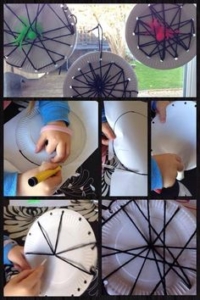
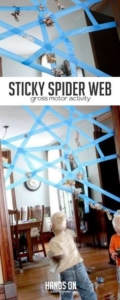
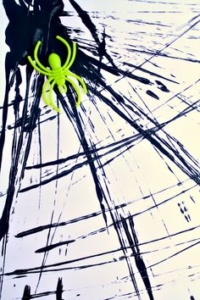
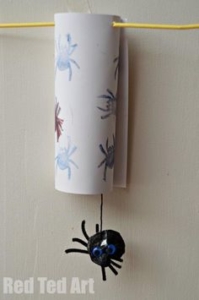
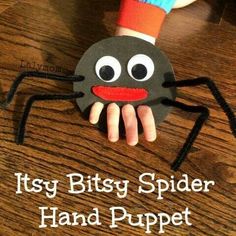
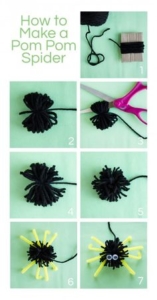
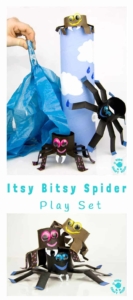
Maths
- Do a survey amongst your friends and family to find out how many people are afraid of spiders. Represent your results in any way that you like.
- Have all the animals from The Very Busy Spider story ready. Can you remember what animals were first, and then next? Encourage your child to retell the story using appropriate language e.g First, the horse asked the spider…
- Spiders have 8 legs. Revise previous learning done in class about the number 8- For example, double and halve number 8, how many different ways can you make the number 8. 0+8, 1+7, 2+6 etc Represent these by writing number sentences or drawing pictures.
- Sort objects into groups of 8.
- Try the daily activity on White Rose Maths: https://whiterosemaths.com/homelearning/early-years/
This is a video of the story that the maths activities are based on. https://www.youtube.com/watch?v=babXCIRMjQM
Literacy
- Look at the poem ‘Little Miss Muffet’. Ask your adult to help you to write your own rhyming couplets for new characters and places to sit such as `Little Miss Cool, sat on a stool’ and `Tall Doctor Cable, sat under a table’.
- After watching videos about spiders, write your own spider fact sheet or non- fiction book.
- Write your own story maps based on either of the two stories that we are focussing on this week.
- By now, most of the class should be at least on yellow book band. If you haven’t tried already, have a go at getting your child to read a book from this level and check for understanding. If they’ve been on yellow book band for a while and you think that it is now too easy, the level after that is blue book band.
- Phonics- It is highly important that your child practises their letter sounds and tricky words and applies them through a reading and writing activity daily. Reading will help improve their vocabulary and a child’s academic success depends upon the ability to read and write and so this should be a priority.
- Please do the daily Department for Education (DFE) ‘Letters and Sounds’ live phonics lesson.
RE
To show that RE is a special learning time, we always light a candle to mark the beginning of lesson and ask ‘Who is with us when we light the candle?’ and ‘Who do we learn about in our RE lesson?’
We then say the school’s Mission Prayer together.
Please see the separate RE blog for the whole school learning focus and complete Activity One only. Thank you!
Ongoing Further Activities and Information
- Sing daily, using the BBC Schools Radio website- https://www.bbc.co.uk/teach/school-radio/eyfs-early-years/z6bgnrd Again, the class love this website and it will be very familiar to them! The class also really enjoy singing the following songs during special prayer time:https://www.youtube.com/watch?v=8fdk0oKMmfghttps://www.youtube.com/watch?v=Cc0QVWzCv9khttps://www.youtube.com/watch?v=DSpyKsPiUhs
- https://www.youtube.com/watch?v=yjh5Kh5Hxu8
- https://www.youtube.com/watch?v=QCN893hzueQ
- https://www.youtube.com/watch?v=DXDGE_lRI0E
Ongoing Maths Activities – try at least one a day
- Go on a walk and count how many rainbows or teddies you can see in the windows of different houses. Which road has the most?
- Counting objects within the house-This could be anything as simple as counting the cutlery in your drawer!
- Looking for shapes in the environment- Can you see the rectangle on the table? The square on the oven door? How many edges does the bookcase have? Can you name the 3D shape that your cereal box is?
- Using positional and directional language- Where is the teddy? On top, under, behind, in front of, next to, in between etc. Use directions to get from one room to another e.g. walk two steps forward, turn left…
- Capacity-Fill the bath and give them your child whichever containers you have at home (jugs, Tupperware). Encourage the language of full, nearly full, half full, nearly empty, empty. Will the water to fill this container fit into another container?
- Time- Create an ‘at home’ timetable together. What shall we do first? What shall do next? What shall we do at the end of the day? Begin to recognise o’ clock times on a clock.
- Money- Empty your purse or money box. Learn the names of the different coins. Use 1p coins to count and add with.
- Patterns- Use every day objects around the home to create patterns e.g. pen, fork, sock, pen, fork, sock. Can they continue and copy your pattern? Can they make their own pattern.
- Length and height- Find three objects from around the home. Can they order them from smallest to largest? Use your feet to measure the length of items in your home (e.g the sofa). How many feet long is it? Counting objects within the house. This could be anything as simple as counting the cutlery in your drawer!
- Addition using objects found within your home- If we have 5 spoons and 3 forks, how many do we have altogether? Include missing numbers e.g I have 5 buttons. How many more do I need to make 10?
- Subtraction using objects found within your home- If we have 7 biscuits and I eat 2 how many biscuits are left?
- Subitising (recognising how many without counting) the amount of objects in a set. How many candles are on the fireplace? How many plates are on the table? Etc
- Watch a Numberblocks episode each day at: BBC iplayer or CBeebies.
- Practise counting up to 20. This can be done through playing hide and seek, singing number songs, chanting, board games etc.
- Write out the digits 0 – 9.
- Sing Number songs to practice counting, reciting numbers in order, one more, one less using number songs: Five Little Ducks, Five Little Men, Ten Green Bottles
- Practise counting backwards from 20.
- Look for the numbers on the doors of houses. Do the numbers get bigger or smaller as you go up and down the street?
- Listen to a number song from the CBeebies website. After listening to them, watch again and sing along if you can. Talk about the maths you can see in the video clip.
- Look out of the window and count how many houses or buildings can be seen
- Explore weighing and measuring food on the kitchen scales. Ask, what happens as you place more on the scales?
- Look for numerals on packaging you find around the house. Can your child recognise the numerals and count out a matching amount.
Maths Websites
https://www.topmarks.co.uk/maths-games/5-7-years
https://matr.org/blog/fun-maths-games-activities-for-kids/
https://www.primarygames.com/math.php
https://www.bbc.co.uk/cbeebies/topics/numeracy
https://apps.mathlearningcenter.org/geoboard/
.
White Rose Maths has prepared a series of five maths lessons for each year group from Year R-8. They will be adding five more each week for the next few weeks. Every lesson comes with a short video showing you clearly and simply how to help your child to complete the activity successfully. Click on the link to find out more.
https://whiterosemaths.com/homelearning/
Independent writing
Parents, please encourage your child to write as often as you can, using their phonics and tricky word knowledge. Please take a close up picture of any writing they do and upload it to Tapestry. If they are forming their letters incorrectly, the wrong way around or hold their pencil the wrong way, please correct your child immediately. Please refer to the inside cover of their original home phonics book for the handwriting phrases, if you find yourself in this position.
Phonics
Please continue to practise all of Phase 2 and Phase 3 sounds and tricky words on a daily basis.
Phase 2 tricky and high frequency words
Read: is, it, in, at, and, the, to, no, go, I, on, a
Phase 3 tricky and high frequency words
Read: he, she, we, me, be, was, my, you, they, her, all, are
Write: the, to, no, go, I
For those children who know all of the above, please begin to teach the following words from Phase 4. (Consolidating phase)
Phase 4 tricky words
Read: said, so, have, like, some, come, were, there, little, one, do, when, out, what
Information about Phase 4 Phonics
During the summer term and only when the children are secure in Phase 2 and 3, Reception usually move over to the Phase 4 stage of Letters and Sounds. When children start, they will know a grapheme for each of the 42 phonemes. They will be able to blend phonemes to read CVC (consonant-vowel-consonant) words and segment in order to spell them.
Children will also have begun reading straightforward two-syllable words and simple captions, as well as reading and spelling some tricky words.
In Phase 4, no new graphemes are introduced. The main aim of this phase is to consolidate the children’s knowledge and to help them learn to read and spell words which have adjacent consonants, such as trap, string and milk.
If your child knows all of the Phase 2 and 3 sounds consistently and the high frequency and tricky words, then please begin to introduce your child to the Phase 4 online games and activities.
Important- Please be aware that if you go onto this phase before they are ready, it may cause your child to have issues with spelling later on in their school life.
The following websites are fantastic for practising phonics phases, word recognition and sentence reading.
https://www.teachyourmonstertoread.com
https://www.phonicsplay.co.uk/freeIndex.htm
http://www.familylearning.org.uk
https://www.spellingcity.com/spelling-games-vocabulary-games.html
Twinkl also have some great phonics and cross curricular resources and are also currently free if you follow these instructions:
Go to https://www.twinkl.co.uk/offer and enter the code: UKTWINKLHELPS
Phonics Play in particular is a fantastic resource for the actual teaching of the Letters and Sounds program. It is currently free to parents due to the Coronavirus situation.
Reading
As well as Oxford Owls, Harper Collins Publishers are now giving parents free access to their Big Cat e-books and activities, which are also organised according to book band colour.
Go to Collins Connect and click on the Teacher portal and enter:
Username: parents@harpercollins.co.uk
Password: Parents20!
and then click Login.
To login to Oxford Owl please continue using the school’s login.
Username:popepaul2020
Password:Ilovereading2020
You must put the detail into Class Login not the general login otherwise it will not work. Once logged in, you can go into the bookshelf. Select 2 books from your child’s book band colour and practise reading them every day. There are two activities to go with each book and parent tips at the end of the book. If you click on the parents section too, you should find even more books and resources.



Leave a Reply
Want to join the discussion?Feel free to contribute!